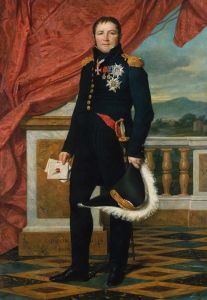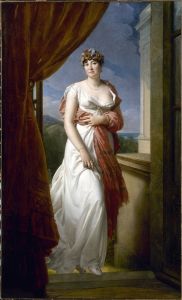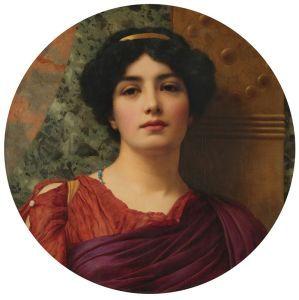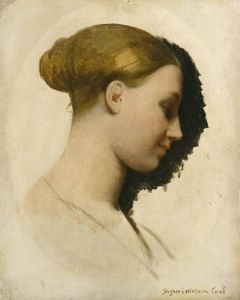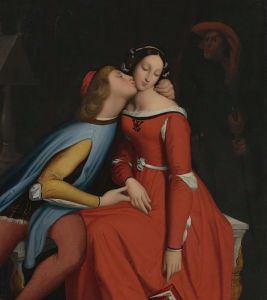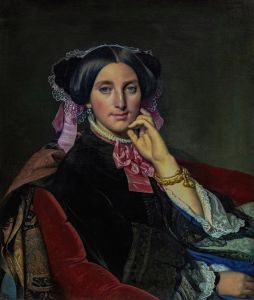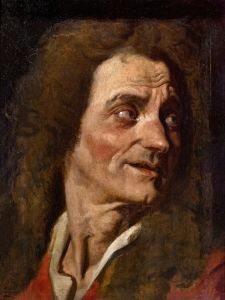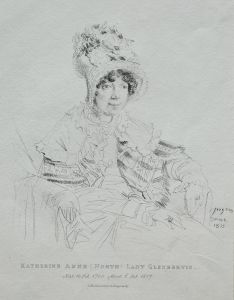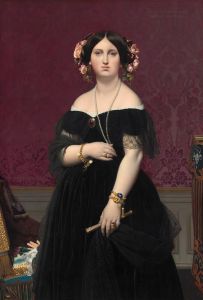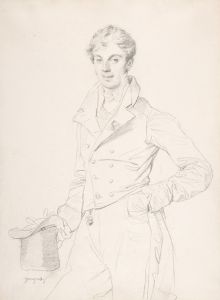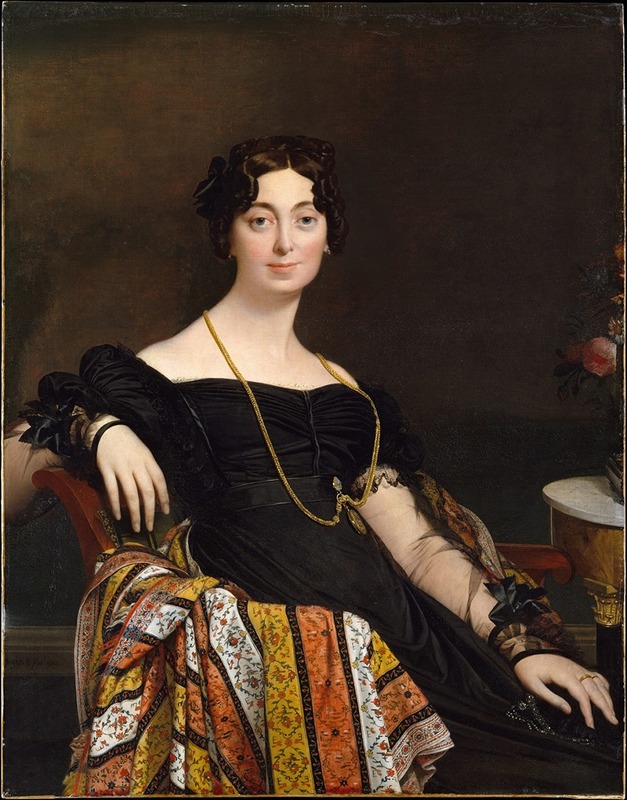
Madame Jacques-Louis Leblanc
A hand-painted replica of Jean Auguste Dominique Ingres’s masterpiece Madame Jacques-Louis Leblanc, meticulously crafted by professional artists to capture the true essence of the original. Each piece is created with museum-quality canvas and rare mineral pigments, carefully painted by experienced artists with delicate brushstrokes and rich, layered colors to perfectly recreate the texture of the original artwork. Unlike machine-printed reproductions, this hand-painted version brings the painting to life, infused with the artist’s emotions and skill in every stroke. Whether for personal collection or home decoration, it instantly elevates the artistic atmosphere of any space.
"Madame Jacques-Louis Leblanc" is an oil painting created by the French Neoclassical artist Jean Auguste Dominique Ingres in 1823. This portrait exemplifies Ingres' mastery in rendering the human form with meticulous detail and his ability to capture the essence of his subjects through his precise and elegant style.
Jean Auguste Dominique Ingres (1780-1867) was a prominent figure in the Neoclassical movement, known for his refined draftsmanship and his dedication to the classical tradition. Ingres was a student of Jacques-Louis David, another leading Neoclassical artist, and he carried forward his mentor's emphasis on clarity, order, and idealized beauty.
The subject of the painting, Madame Jacques-Louis Leblanc, was the wife of a wealthy banker, Jacques-Louis Leblanc. The Leblanc family was part of the affluent bourgeoisie in early 19th-century France, and they were known for their patronage of the arts. The exact identity of Madame Leblanc is not widely documented, but her portrayal in this painting suggests a woman of considerable poise and elegance.
In "Madame Jacques-Louis Leblanc," Ingres presents the sitter in a three-quarter view, seated gracefully with her hands delicately resting in her lap. She is dressed in a sumptuous white gown adorned with lace and ribbons, which highlights her status and sophistication. The attention to detail in the rendering of the fabric and the textures of her attire is a testament to Ingres' skill and his dedication to achieving a high level of realism.
The background of the painting is relatively plain, with a muted color palette that serves to emphasize the figure of Madame Leblanc. This compositional choice directs the viewer's focus entirely on the sitter, allowing her serene expression and dignified posture to dominate the scene. Ingres' use of light and shadow further enhances the three-dimensionality of the figure, creating a lifelike presence that seems to emerge from the canvas.
Ingres' portraits are renowned for their psychological depth, and "Madame Jacques-Louis Leblanc" is no exception. The sitter's calm and composed demeanor suggests a woman of intelligence and refinement, qualities that were highly valued in the society of the time. Ingres' ability to convey these attributes through subtle facial expressions and body language is one of the hallmarks of his portraiture.
The painting is currently housed in the Musée Ingres in Montauban, France, which holds a significant collection of Ingres' works. The museum is dedicated to preserving and showcasing the legacy of this influential artist, providing insight into his contributions to the Neoclassical movement and his impact on the art world.
"Madame Jacques-Louis Leblanc" remains an important example of Ingres' portraiture, demonstrating his technical prowess and his ability to capture the essence of his subjects with grace and precision. Through this work, viewers can appreciate the enduring appeal of Ingres' art and his role in shaping the visual culture of his time.





